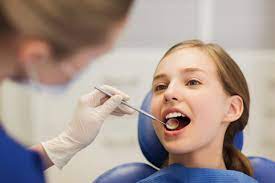Forget Drying: The Mind-Blowing Science of How UV Light Creates Instant Solids
Release time:
2025-10-08
The Problem with Waiting
We’ve all been there—watching paint dry, waiting for the ink on a freshly printed page to set, carefully avoiding any smudge. This waiting game is a normal part of life because traditional coatings and inks rely on a slow process of evaporation. But what if you could turn a liquid into a solid instantly? UV curing technology does just that, and the science behind it is more surprising than you might think. Here are four truths about how this remarkable process works.
Four Surprising Truths About UV Curing
So, how does this technological magic trick work? Let's break down the four surprising truths that separate UV curing from everything you thought you knew about 'drying.'
1. It’s Not Drying—It’s an Instant Chemical Reaction
The biggest misconception about UV curing is that it’s a form of ultra-fast drying. In reality, it has nothing to do with drying at all.
Conventional inks and coatings are made of polymers dissolved in a solvent, like water. To become solid, the solvent must evaporate, which takes time. UV curing formulations, however, contain no water or solvents to evaporate. Instead, the liquid undergoes a chemical reaction called polymerization. When exposed to UV energy, the liquid components instantly chain together into a solid, interlocking network.
2. The Magic is Triggered by "Photoinitiators"
So, what kicks off this instant chemical reaction? The secret lies in special compounds mixed into the UV liquid called photoinitiators.
Think of photoinitiators as the key that starts the engine. These molecules are specifically designed to absorb the energy from UV light. The moment they are exposed, they kickstart the polymerization process, causing all the other liquid molecules (monomers and oligomers) to rapidly form a strong, solid network. Without photoinitiators, the liquid would simply remain liquid under a UV lamp.
3. The Curing Process is Incredibly Fast and Energy Efficient
The polymerization triggered by UV light is astonishingly quick. The complete transformation from liquid to solid happens in a fraction of a second. This is a world away from the minutes, hours, or even days required for traditional evaporation-based drying. It's the difference between a chemical reaction and a waiting game.
Beyond its speed, the process is also highly efficient. Curing with UV light requires significantly less energy than the large thermal ovens needed to evaporate solvents from conventional coatings. This combination of speed and low energy consumption makes it a powerful technology for modern manufacturing.
4. It's a Greener, Cleaner Technology
Because UV curing formulations contain no solvents, they offer a major environmental advantage. The evaporation process in traditional coatings releases Volatile Organic Compounds (VOCs) into the atmosphere, which are a source of pollution and can pose health and safety risks.
UV curing completely avoids this issue. Since there is no evaporation, no VOCs are released. This makes it a cleaner, more sustainable, and safer alternative to traditional solvent-based systems.
Conclusion: The Future is Instant
The next time you hear the phrase "watching paint dry," you'll know it's a relic of the past. UV curing isn't just faster drying—it's a fundamentally different process that replaces slow evaporation with an instant chemical reaction. By using UV-sensitive photoinitiators to trigger polymerization, it creates a solid material in a flash with less energy and no harmful solvent emissions.
What if the fillings at your dentist's office, the finish on your car, or even 3D-printed materials could all be formed and finalized in a single flash of light?
UV CURING
Previous Page
Latest News
Get a Free Consultancy
NANTONG EASTO MATERIALS TECHNOLOGY CO.,LTD.

No.118,Zhujiang Rd.,Juegang St.,Rudong County,
Nantong City,Jiangsu Province,226400,China




 2025-10-23
2025-10-23







